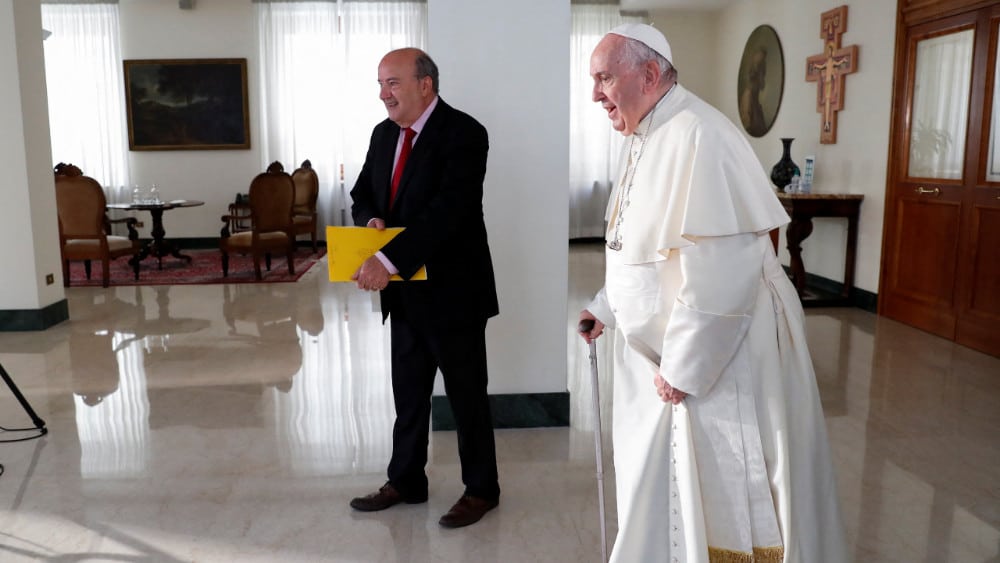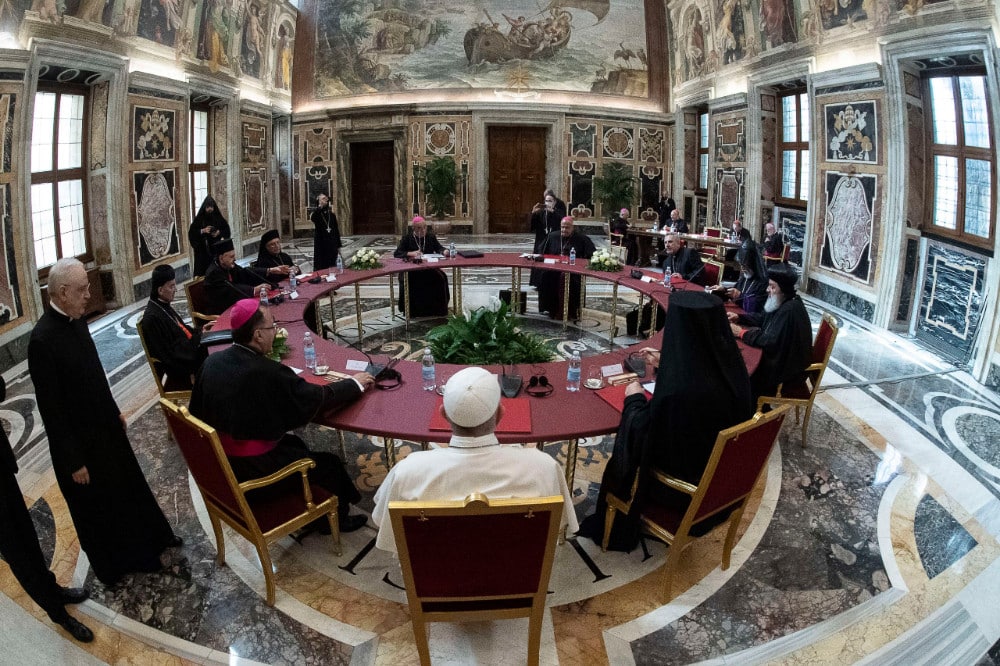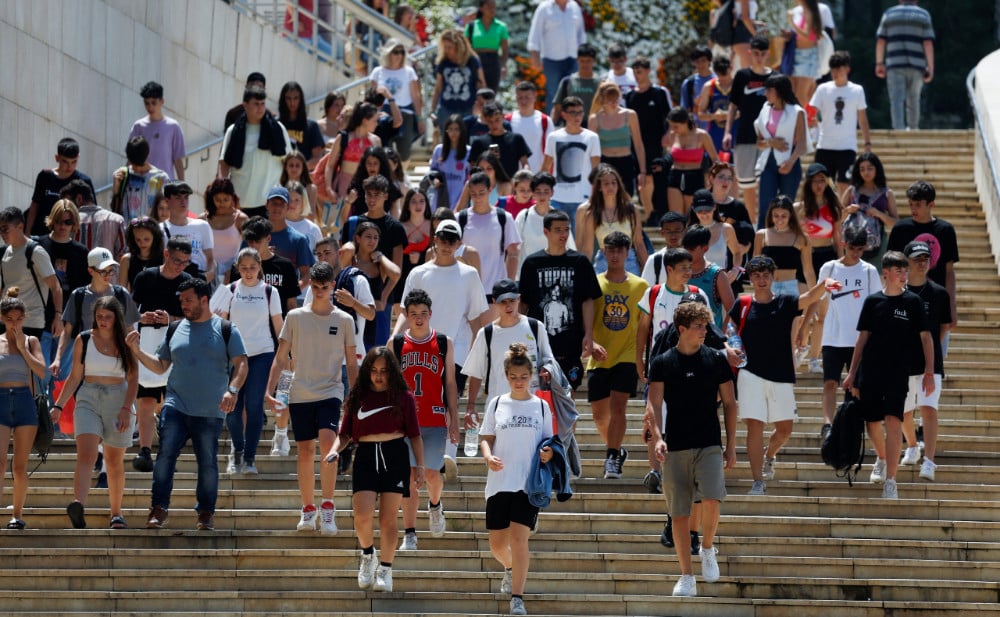On the solemnity of Sts. Peter and Paul, Pope Francis released an apostolic letter dealing with liturgical formation. The publication of Desiderio Desideravi (a reference to Luke 22:15, where Jesus states that he has longingly desired to eat this Passover meal) would typically generate little interest apart from liturgical scholars, diocesan offices of divine worship and seminaries. After all, it’s a document on what is seemingly an intramural issue: how to prepare men and women to actively participate in the liturgy.
But, as we know, liturgical issues are never about the liturgy alone. Pope Francis’ promulgation of this document on the solemnity of Sts. Peter and Paul was not accidental. The liturgical conflicts since the Second Vatican Council have once again heated up, this time related to the status of the 1962 Eucharistic liturgy. Pope Francis, as he made clear in his 2021 apostolic letter Traditionis Custodes, views the Latin Mass as a source of profound disunity. Except for a few exceptions, that Mass should not be celebrated in the Church.
And yet, one cannot read this document simply as another slap-down on traditionalists. Instead, the document is aligned with Pope St. John Paul II’s teaching that the days of liturgical experimentation following Vatican II have ended. The next stage of liturgical reception of Vatican II has begun, and it’s not about reforming the liturgy. It’s about reforming us into worshipful creatures.
Embracing the reforms
First, Desiderio Desideravi is indeed hard on traditionalists. Pope Francis underlines his earlier teaching that there is a single form of the Roman rite, necessary for expressing the unity of the Church. He acknowledges in the letter that he does not see how one can accept Vatican II while either remaining highly critical or dismissing entirely the liturgical reforms of the council.
Now, this is a complicated claim. After all, although I do not attend what was once called the Latin Mass, most Catholics I know who attend such parishes are staunch defenders of Vatican II. They are well-read in the theologians who wrote the documents of the council. Such persons actively support Vatican II’s teaching on religious liberty, the dignity of the conscience and the elevated state of the lay vocation. They contend that post-conciliar liturgical reforms were imperfect, and they see their 1962 parish as closer to what Vatican II intended. Liturgical scholars will continue to debate these points over the next 50 years, and there is no way around this (without asking scholars to cease engaging in their work). Simply, we are going to have this clash around for a bit, and no letter from Pope Francis will be sufficient to meet the challenge. In fact, I believe some of these clashes are needed for the continued reception of the council (a claim for another article).
But if we too myopically focus only the traditionalist argument, we miss a far more important and, I believe, rather traditional point of Pope Francis’. In his 2003 apostolic exhortation Ecclesia in Europe, John Paul II noted that the Church had reached the end of the period of liturgical experimentation. A student in liturgy at the time, I remember the consternation of not a few liturgists around John Paul II’s contention. We should remember that, in 2003, liturgical experimentation was not unusual. Many liturgists saw part of their vocation as preparing for the next stage of liturgical development, a Vatican III that would enact further reforms.
Pope Francis is taking up a similar position to John Paul II. He writes in Desiderio Desideravi, “The non-acceptance of the liturgical reform … distracts us from the obligation of finding responses to the question that I come back to repeating: How can we grow in our capacity to live in fully the liturgical action?” (No. 31). In other words, the task ahead of the Church is not a further reform of the liturgy, either progressive or traditionalist. Although less directly, Pope Francis remains concerned about liturgical abuse, occasions in which priests put themselves at the center of the liturgical action. His vision of the liturgy is not Clown Masses and an erasure of all liturgical hierarchy. Rather, if we keep dinking around with the liturgy — a liturgy that, by the way, has been well-received by most of the Church throughout the world and is a source of renewal in such places — we will never turn to the next stage of liturgical renewal.
Forming men and women
It is this next stage of liturgical renewal that is the focal point of the letter. It should be remembered that Pope Francis almost received his doctorate in the work of Romano Guardini. If Laudato Si’ attends to Guardini’s account of power and technology, Desiderio Desideravi turns to his liturgical work.
After all, it was Guardini who wrote to the German bishops in 1964, urging them to recognize that liturgical reform was not sufficient. If you wanted a fruitful liturgical renewal, we were going to need to foster a liturgical personhood or humanism. We would need to form men and women to live again in a worshipful manner.
This worshipful formation is the heart of Desiderio Desideravi. The title highlights that liturgy is not about rubrics, nor does it relate to self-expression. Rather, liturgical prayer — especially the Eucharist — pertains to God’s desire for us. Such desire is expressed in a way that we, the faithful, can offer the return gift of our flesh-and-blood lives back to the triune God.
Taking up the work of Guardini, Pope Francis acknowledges that we are creatures who no longer know how to exercise a symbolic imagination. It is Christ who is active in the liturgy, using material signs related to our senses. The waters of creation, Pope Francis notes, were always intended for the Sacrament of Baptism. If only we had the ability to contemplate this gift of water, perhaps to slow down a bit. If we might only open our eyes and see the wondrous ways that God has used water throughout time and space.
Pope Francis is once again drawing our attention to the liturgical event. Somehow, immersed in the endless liturgical wars, we have forgotten that the liturgical renewal was based around a theological vision of the human person as redeemed through the Paschal Mystery of Jesus Christ. Yes, some of the collects aren’t perfect. Yes, there is historical evidence that contradicts this or that reform. But that wasn’t the point of the reforms in the first place, to perfectly enact what took place in the 5th or 16th centuries.
If we remain trapped in the endless desire for control and thereby reform, we will never learn the proper liturgical dispositions that the rites sought to inculcate in priests and the faithful alike. The question of whether the priest faces east or toward the people pales in comparison to whether the priest understands the gravity of his task, of sacramentally representing in his very body — as Pope Francis reminds clergy — the person of Jesus Christ. A renewed art of celebration (ars celebrandi) necessitates a deeper spiritual formation of the cleric.
Pope Francis, therefore, is calling the Church to a new stage of the liturgical renewal, continuing what St. John Paul II asked of the Church. Not everything is perfect, of course. But liturgical wrangling — just perhaps — has forgotten the theological telos of the liturgy, one where the People of God exercise their identity as priests, prophets and royal figures.
In every parish in the world, Jesus Christ is the high priest bringing the Church together to adore the living God, and then to manifest to the world the Good News of divine salvation.
The task, for us, is to learn to see, believe and perform that fact.
Timothy P. O’Malley, Ph.D., is the director of education at the McGrath Institute for Church Life at the University of Notre Dame.







